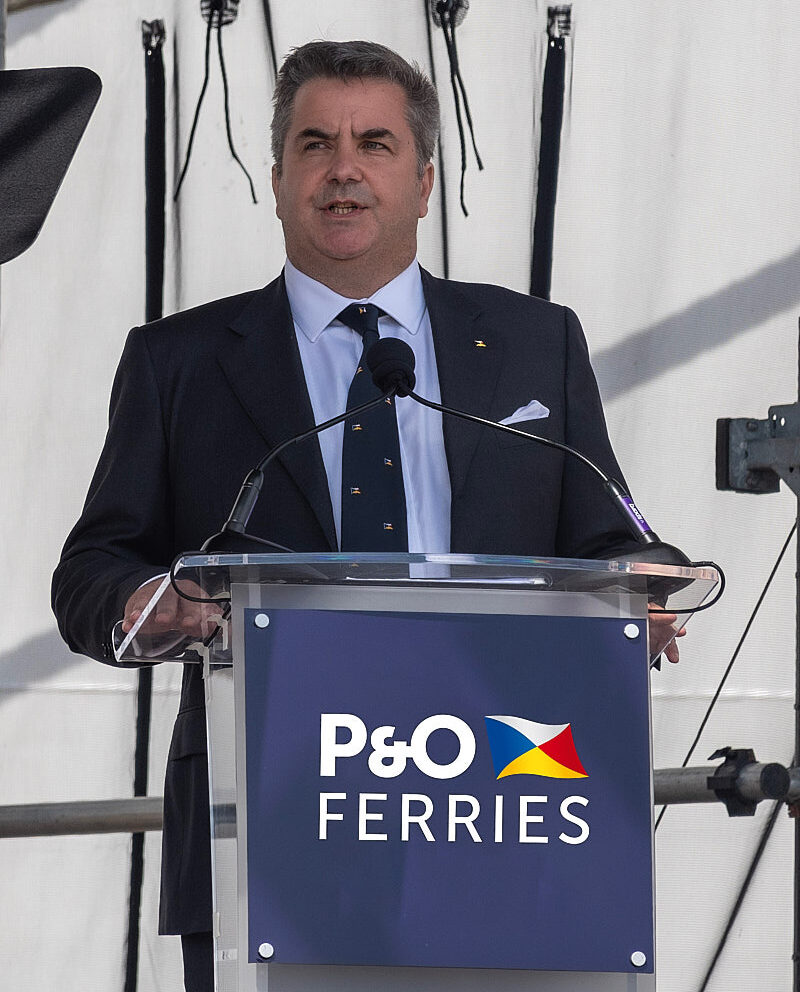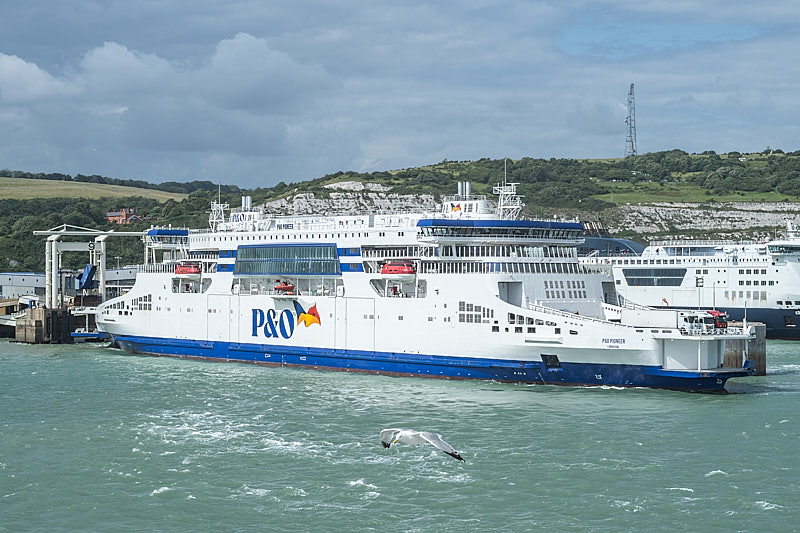Is there a more fitting way to meet a ferry executive than by arriving via their own award-winning vessel, such as the esteemed P&O PIONEER? This was precisely my approach as I set sail from Calais for a swift journey to Dover, where I had the privilege of interviewing P&O Ferries’ CEO, Peter Hebblethwaite.
The P&O PIONEER itself is a marvel, leaving an indelible impression. If the opportunity arises, I highly recommend experiencing a crossing; the sheer size of the vessel is awe-inspiring. Even on this gloomy autumn day, the interior radiated a surprising brightness. Everything, from the layout to the functionality, exuded simplicity, yet what truly captivated me was the pervasive sense of hospitality. The crew members welcomed me with genuine warmth.
In what seemed like no time at all, I found myself in Dover, in what could arguably be described as an office boasting the most picturesque view of the port.
Mr. Hebblethwaite, considering your relatively recent entry into this industry, could you share a bit about your background? Additionally, how do you perceive the ferry business and its future direction?
I have a professional background in retail, fast-moving consumer goods, and hospitality, and when I joined the UK ferry industry I noticed a big discrepancy in the consumer experience. After the 2008 recession, consumer expectations underwent a major change. This happened similarly in the USA during the 1990s, when people’s understanding and expectations regarding value for money changed forever.
I noted that the industry environment was rather antiquated. The consumer experience and value proposition appeared outdated, presenting a remarkable opportunity. Within the ferry sector, there are significant prospects to make a seismic change. I firmly believe that vessels like the P&O Pioneer and P&O Liberté are positioned to make this transformative leap forward within the remarkable framework of the industry.
As of January 1, 2024, the EU ETS will come into effect. What are your thoughts on this new regulation?
We’re facing a climate crisis, and the EU ETS program provides a chance for us to make a positive impact. It is keeping us focused on reducing emissions, and it creates a competitive disadvantage for those who don’t comply. Moreover, the program generates funds to support climate initiatives, and we’re fully on board with this.
We’ve embraced this opportunity by implementing changes beyond just acquiring new hybrid ships. It’s about transforming our entire business operation to be more environmentally and commercially responsible. We’re applying charges to both tourists and freight, regularly reviewed like BAF for freight. The key is not just purchasing new ships or adopting biofuels; it’s a comprehensive strategy. We’ve right-sized capacity to meet demand, eliminated inefficiencies and unused sailings, and aligned our services more effectively with customer demand.
By doing so, we’ve not only become more environmentally friendly but also more efficient. This increased efficiency allows us to spread the environmental charge over a larger number of units, ensuring competitive pricing for our customers. Importantly, we’ve removed loss-making and environmentally unfriendly sailings, reducing our CO2 emissions by 150,000 tonnes.
Our focus is on finding the right balance – providing the ferry services our customers need, ensuring regularity, and aligning with environmental and commercial responsibilities. This involves running the right number and type of ships, adhering to schedules, and striving to fill ships as much as possible for both environmental and commercial reasons.
With the imminent addition of the P&O LIBERTÉ to the fleet, you’ll soon have two pairs of modern ships. Do you believe this configuration will be optimal for the Calais-Dover route?
We will stand alone as the sole operator with a fleet exclusively designed for the unique demands of the Calais-Dover route. There’s no other route globally quite like Dover – Calais, be it the connection to the shore via the linkspan, the intensity of operations, or the blend of tourists and freight. Our ships are tailored precisely for this route, ensuring heightened reliability, increased efficiency, and a significantly enhanced onboard experience compared to what would be possible without these specialized vessels.
Take, for instance, the shower facilities for freight drivers on our new ships—true game-changers. Recognizing the importance of driver welfare in an industry struggling to attract professionals, it becomes our responsibility to support these individuals. The nature of their work is demanding and often strenuous, and we aim to provide the facilities necessary for drivers to rest, eat, and be cared for properly. Our ships boast facilities that set us apart from others in the industry.
Feedback from drivers about the new ship has been overwhelmingly positive, with universal acclaim for its features and amenities.
While P&O Ferries has established itself as a robust brand in the tourist and passenger sector, how does the company approach and cater to the freight aspect of its operations?
While P&O Ferries takes great pride in being a formidable brand in the tourist and passenger sector, it’s crucial to acknowledge that a substantial 65% of our revenue is derived from freight operations. As a result, we are strategically shifting our focus to emphasize our role as a freight-led business. While we remain committed to delivering an exceptional passenger experience, our primary orientation is now freight centric.
Recognizing the needs of the freight market, both in the UK and on the continent, our objective is to provide the most efficient freight services possible. Our emphasis on cost per unit and achieving high levels of utilization underscores our commitment to operating the most efficient business in the market. This approach allows us not only to offer the most compelling proposition but also to deliver the most competitive pricing—something essential for the economic well-being of both the UK and the Continent.
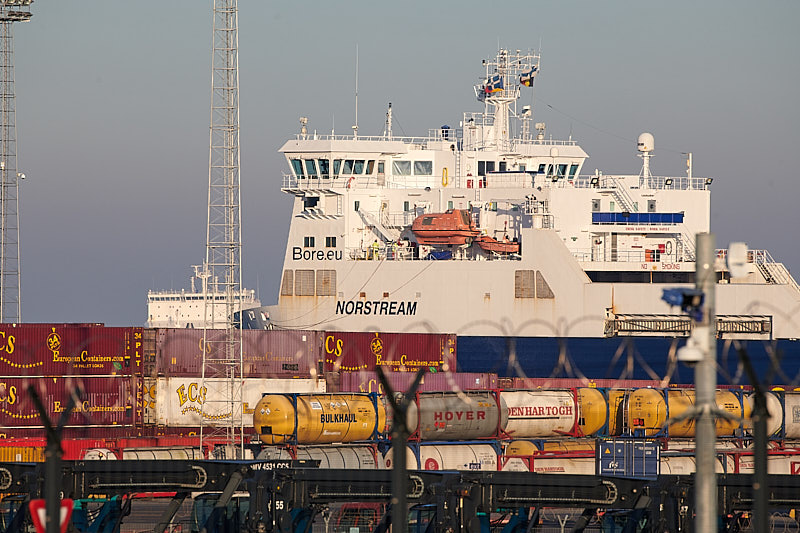
65% of P&O Ferries’ revenue is derived from freight operations (photo: Mike Louagie)
The competition on the English Channel is intense, encompassing both freight and tourism sectors and involving both ferries and tunnels. How do you perceive this competitive landscape?
We have established a robust space charter agreement with DFDS, enhancing the services available to our freight customers. This improvement is now being extended to tourists, providing them with a more reliable turn-up-and-go service. Many of our customers typically book prebooked tickets, and deviations from the scheduled time can create challenges. For instance, arriving early may lead to prolonged wait times, while missing the scheduled departure may result in a wait of up to an hour and a half for the next available ferry.
The introduction of the tourist co-share program allows us to enhance our service. Previously, if travellers were uncertain about their arrival time, they might opt for the tunnel due to its higher frequency of departures. Now, we can offer a similar frequency at a significantly reduced cost compared to the tunnel, which is known for its high ticket prices.
Will people have to pay more for this flexibility?
DFDS will make their own decisions, but I am not going to charge more for it. I really want to give customers an alternative to the tunnel.
Do you believe passengers compare the prices of ferries and tunnel when making their travel choices?
One factor influencing the decision is the uncertainty about being at a specific location at a certain time. Historically, the tunnel was the sole option offering such flexibility. However, now we provide the same flexibility without additional charges.
How is P&O evolving, despite the difficult economic situation?
It’s more complicated for us because we’re on this journey to modernise this old and grand organisation. Every year we are making significant progress. Tourism is 100% up to last year, freight is 63% up and we will continue to grow the business each year, so that we can service our customers with better service and better pricing. We want to do that better than anybody else. It’s a difficult journey. Everything needs modernising but when we do modernise, we’re making huge step changes. We are on a difficult but very exciting journey to dramatically change this business, and as difficult it is, we’re fully committed to it.
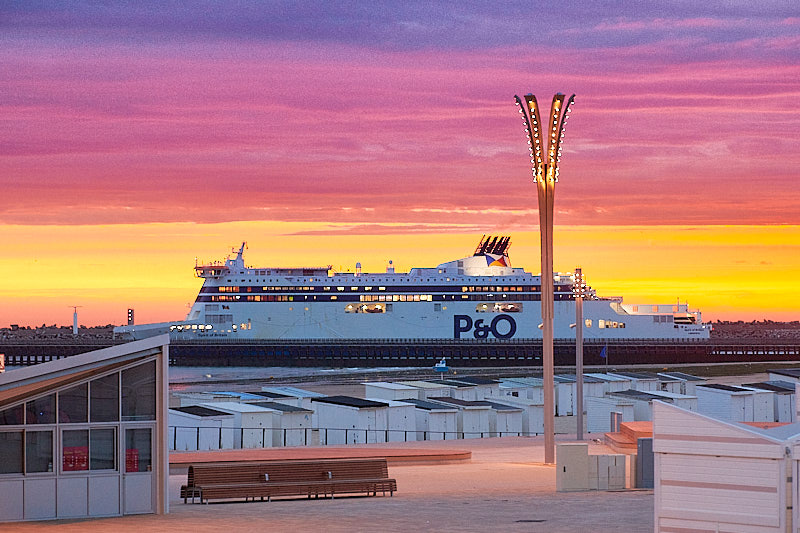
P&O Ferries will stand alone as the sole operator with a fleet exclusively designed for the unique demands of the Calais-Dover route. (photo: Mike Louagie)
How much support do you get from your owner DP World?
We’re on a journey to modernize our business, not merely for increased profitability but as an integral part of the DP World family, contributing to a global end-to-end supply solution. This path requires tough decisions, but it’s crucial for creating an efficient ferry operation aligned with DP World’s long-term strategy.
These bold steps are not indicative of a stagnant business; rather, they are part of a plan to build a more dynamic and efficient model, laying the groundwork for future growth. Our restructuring efforts began a couple of years ago, reshaping offices and operations with a focus on the long-term, acknowledging the challenging global environment. DP World not only provide financial support but are our dedicated custodians for this transformative journey.
DP World’s commitment extends beyond normal shareholder support; it’s deeply rooted in a desire to see P&O regain its past prominence and align strategically within the DP World family. Their unprecedented backing underscores their dedication to the UK economy, with an existing 2 billion pounds investment and another billion planned.
Thames Freeport is “a partnership between Ford, Forth Ports Limited and DP World, Thames Freeport will see over £4.6 billion in new public and private investment, and the creation of over 21,000 new jobs and many more across supply chains.”
It will be a hub for food / building materials / automotive / batteries…
What’s the logic to have a hub in the UK (serving the UK only), when ports like Zeebrugge and Rotterdam can be hubs for all Europe?
We see the Thames (we currently go to Tilbury) as a critical part of our North Sea strategy. I agree that Europoort, Zeebrugge and the Humber are critical hubs that we need to operate.
Whilst we are doing investments on the Channel, we also think the North Sea is an incredibly exciting environment for us.
We are committed to Teesport for the foreseeable future, with a long-term contract. We also have the FINNPULP Ro-Ro going in, in cooperation with Finnlines.
Tell us some more.
We are very keen to continue the cooperation with Finnlines. We think that a modern, dynamic ferry business needs to collaborate with others. We can create efficiencies by doing that, that we cannot achieve on our own. This is evidenced by the space charter we have with Finnlines. We get a share of the FINNPULP for a limited part of the week.
Ships are very expensive to run. If you can carve the cost up, it changes the options dramatically. You create an efficiency which you cannot achieve on your own.
We are keen to collaborate with the right people, on the right subject in the right place. There’s a lot of opportunity to do that, with DFDS, with Finnlines, and there remain others to do that.
Recently, British and Belgian ministers signed an agreement for Green Transport Corridors. Do you see possibilities for P&O?
Where there is an opportunity for us to take steps (as on the Channel with an investment of 250 million pounds and 150k fewer CO2 emissions), we will of course take them. We don’t currently have a zero-emissions ship (yet, we are working on our ship strategy) but I don’t think our environmental responsibility is just about buying new ships, it’s about how you run them. There are great opportunities in the short term.
How do ferries fit in the current tourism & travel trends?
P&O Ferries currently occupy a unique and advantageous position. While my generation leaned towards low-cost airlines, the generation before mine frequently considered ferries. However, today, ferries align remarkably well with modern consumer preferences, particularly in the experiential economy era. Unlike cramped tubes, whether in the sky or on rails, ferries offer a more affordable and enjoyable experience. In an age where people are increasingly active and want to bring along bicycles, surfboards, pets, and more, ferries provide the ideal solution.
It’s essential to reach out to these generations who may not instinctively consider ferries and highlight that our offerings perfectly match their desires: cost-effectiveness, enhanced experience, fresh air, the freedom to bring along belongings, and even their cars. Let’s not forget the added benefit of Duty-Free, a positive outcome from Brexit, offering excellent value for money.
In any industry, there comes a moment when it aligns with broader consumer trends. For us, that moment is now. The task ahead is simply to communicate this alignment to everyone because, at 27, ferry travel might not be top of mind when thinking about transportation – it’s planes and trains that usually take centre stage.
What’s happening in the Irish Sea? You had to abandon the route Liverpool – Dublin.
We’ve been talking to Peel Ports for a while. They wanted the Liverpool terminal back and were unable to offer us a viable alternative. It was not our choice to close Liverpool-Dublin.
Still, the Irish Sea is important to us. We own Larne and Cairnryan and are completely committed to that. The Irish Sea remains a part of our long-term business. Larne is fantastic. Belfast is full, in Larne I have five berths, it’s huge and I own it. I believe it represents opportunities to service the Irish Sea that other ports cannot offer.
What will happen with the ships NORBANK and NORBAY?
We have multiple options what to do with these attractive ships. They are flexible inexpensive Ro-Pax ships. But so far, I must keep the plans for myself.
NORBAY is currently on short-term charter to Irish Ferries.
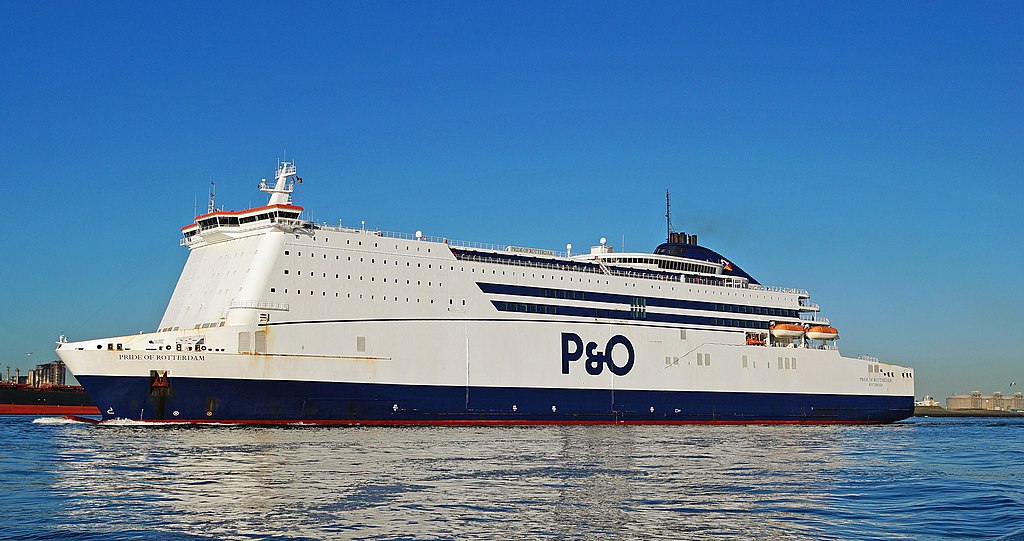
PRIDE OF ROTTERDAM (Photo Kees Tom, Wikimedia Commons)
We almost forgot the cruise ferries on Europoort – Hull. What’s their future?
It’s a huge success for us. We are full from a passenger point of view, and full from a freight point of view. The experience is just getting better and better. I would love to add a spa. We have two cinemas, loads of bars, and two restaurants. It is a brilliant experience. And at both ends the destination is so interesting: Rotterdam, Amsterdam, Hull, York and the prettiest countryside in England.
Thank you for this interview!

